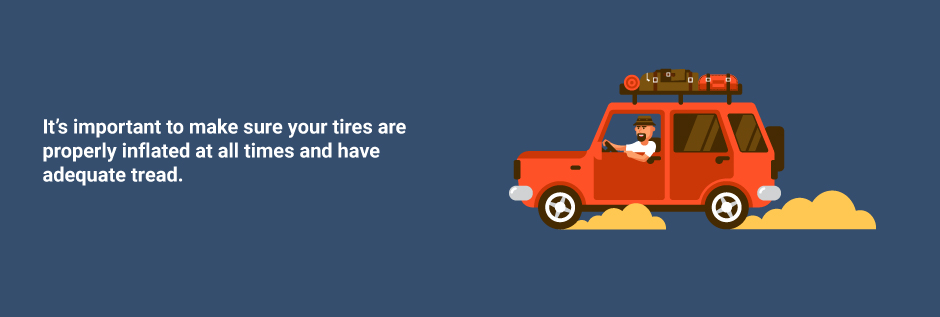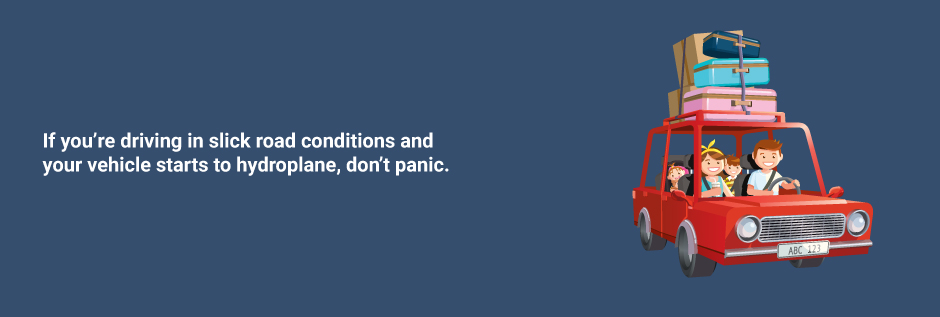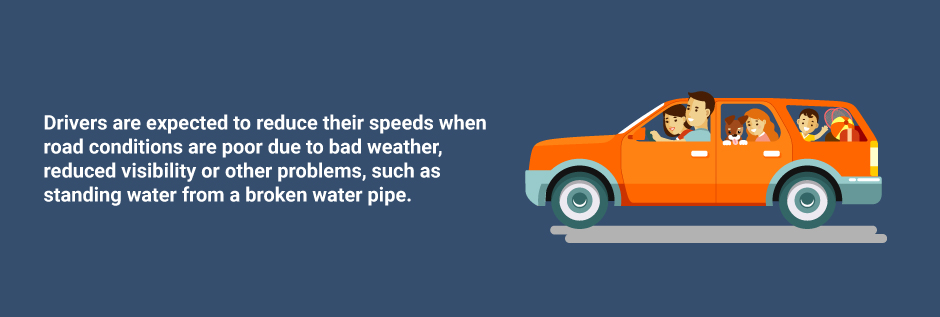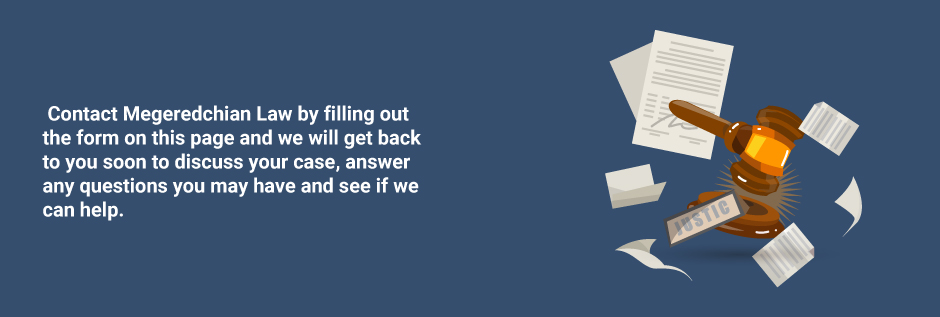When there is moisture, ice or standing water on a California road, drivers may experience hydroplaning, which is skidding or sliding on a wet surface. When a tire comes in contact with a wet surface, the vehicle may lose traction and a driver may quickly lose control of the vehicle.
When a vehicle hydroplanes, the tire is separated from the road by water. Traction is lost, and the vehicle may lose power control including steering and braking ability.
Water doesn’t have to be deep for hydroplaning to occur. Light rain that mixes with drops of oil on the road can cause very slick conditions. Hydroplaning can also occur when there is ice on the road.
Tips to Avoid Hydroplaning

There are several things you can do that may help to prevent hydroplaning. It’s important to make sure your tires are properly inflated at all times and have adequate tread. Other actions you can take include:
- Allow plenty of time to arrive at your destination and decrease speed whenever you drive in rain or otherwise wet conditions
- Turn off cruise control
- Pay attention to the vehicles in front of you and be aware if they encounter standing water
- Don’t ride too closely to the vehicle in front of you and increase distance during poor conditions
- Avoid driving through standing water whenever possible
- Avoid hard braking
- Avoid making fast turns, especially in wet conditions
What to Do if Your Vehicle Starts to Hydroplane

If you’re driving in slick road conditions and your vehicle starts to hydroplane, don’t panic. Here are some things you should do:
- Take your foot off the gas pedal
- Firmly grip the steering wheel
- Keep the steering wheel straight and avoid trying to force the car to change direction
- Don’t slam on the brakes. If you feel your tires make contact with the surface of the road, pump your brakes
What to Do When You’ve Been in a Hydroplaning Accident

Drivers are expected to reduce their speeds when road conditions are poor due to bad weather, reduced visibility or other problems, such as standing water from a broken water pipe. Driver errors aren’t always the cause of hydroplaning accidents.
Accidents may occur just because of bad weather and may not be either driver’s fault. In some cases, the road may have not been maintained adequately by a county or state. If this happens, failure to fix ruts or provide sufficient drainage can cause water to pool, ultimately leading to accidents.
If you’ve been hurt in a hydroplaning accident, it will need to be determined whether there is any evidence that the accident was caused by someone’s negligence. You will need to investigate if any of the following may have been a factor, and you may want an expert in the field of personal injury law to help determine:
- Whether the road was properly constructed and maintained
- Whether there were problems with drainage systems near the road
- Whether a vehicle that hit yours had adequately inflated tires
- Whether the other driver was driving too fast for conditions
- If a commercial vehicle was involved, determine whether the driver was adequately trained to be operating that vehicle
- If it was a commercial vehicle, determine whether it had necessary safety maintenance done in a timely manner

Getting Legal Advice After a Hydroplaning Accident
If you have been injured in a hydroplaning accident that may have been caused by another driver’s recklessness or failure to reduce speed, or if you think lack of proper road maintenance may have caused your accident, talk to a California personal injury attorney. Contact Megeredchian Law by filling out the form on this page and we will get back to you soon to discuss your case, answer any questions you may have and see if we can help.
Related Readings:

 Call Us:
Call Us: 